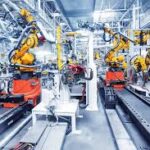- The earliest machined object before uncovered was a dish discovered in Italy as well as made in 700 B.C. utilizing a turret.
- Efforts to automate machining begun in the 18th century. This equipment was purely mechanical, as well as powered by steam.
- The first programmable maker was established in the late ’40s in MIT. It utilized punched cards to encode each motion.
- The proliferation of computer systems in the ’50s, as well as ‘60s, added the “C” in CNC, as well as drastically changed the production sector.
- Today, CNC equipment is innovative robotic systems with multi-axis as well as multi-tooling capabilities.
To learn about the double column machining center, please visit the link.
Kinds of CNC Devices
In this guide, we will concentrate on CNC makers that get rid of material utilizing cutting tools. These are the most typical, as well as have the best range of applications. Various other CNC devices consist of plasma cutters, laser cutters, as well as EDM equipment.
3-Axis CNC Makers
CNC milling, as well as CNC turning machines, are examples of 3-axis CNC systems. These “basic” makers enable the movement of the cutting device in 3 linear axes relative to the workpiece, back-forth, left-right, as well as up-down.
CNC Milling
- The workpiece is held stationary directly on the maker bed or in a vice.
- Product is eliminated from the work surface using cutting tools or drills that rotate at high speed.
- The tools are connected to a pin, which can move along 3 straight axis.
3-axis CNC milling equipment is really typical, as it can be utilized to produce most typical geometries. They are relatively simple to program as well as operate, so start-up machining costs are fairly low.
Tool gain access can be a layout limitation in CNC milling. As there are only three-axis to deal with, specific areas may be impossible to get to. This is not a large problem if the workpiece needs to be turned simply when; however, if numerous rotations are needed the labor and machining costs increase quickly.







